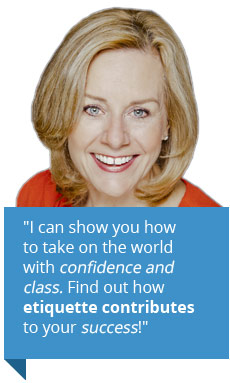Being Inclusive and Embracing Gender-Neutral Pronouns
November 5, 2019Here’s How You Can Embrace Gender-Neutral Pronouns
It should come as no surprise that I am a big believer in the power of words. They can welcome or exclude, admire or demean. An exciting, recent example of this is the movement of people choosing their own third-person pronouns. Much like the way you strive to spell and pronounce people’s names correctly, using others’ chosen personal pronouns is a basic but important way for you to treat them with dignity and respect.

A Bit of Background
More than ever, people who do not identify as a man or a woman are feeling comfortable enough to truly be themselves. You may encounter individuals who see themselves as neither gender or as a mix of both. This can include non-binary, transgender, gender fluid, gender nonconforming, and genderqueer individuals. One of the ways in which they can communicate their identities is by choosing their own personal pronouns, or which pronouns they would like others to use when addressing them. These are commonly referred to as gender neutral pronouns or gender expansive, and they are a powerful way for those who use them to help others feel seen, valued, and included.
Keep It Simple
Evolving your language to be more inclusive is actually quite easy! Like anything, it will just take some mindful practice at the beginning. You’ll also find that others will appreciate your genuine efforts, even if you make some missteps along the way. The most commonly embraced set of gender-expansive pronouns is they/them in place of him/her or he/she. And for all you grammatical sticklers out there (myself included!), the AP Stylebook, several dictionaries, and other language experts have embraced they/them as a singular pronoun. There are more options out there, such as ze/hir/hirs, but don’t worry: the web is full of resources to help you with usage and conjugation. Another easy one is the new honorific of Mx. When in doubt, you can always use it in place of Mr., Mrs., or Ms.
These new pronouns have been adopted by quite a diverse array of people; you wouldn’t be able to tell who they are on sight. So, how do you know which pronouns to use when meeting someone new? GLAAD recommends simply listening. They or someone around them will often address the individual with the correct pronouns, allowing you to just run with it. If this doesn’t happen, just ask! Offer your own information first by saying something like, “Hi! I’m Margaret and I use the pronouns she and her. What about you?” If you do, however, make a mistake, simply offer a short, sincere apology and move on – good advice for life in general!
Professional Pointers
There are a few habits you can adopt in business scenarios that will help employees, colleagues, and clients of all gender identities feel welcome and relaxed. According to the Human Rights Campaign Foundation, a great place to start is with an audit of your company’s printed and online materials. Looking for opportunities for all employees to incorporate their personal pronouns and honorifics will send a powerful message of inclusivity. This can include employee bios on your website and on LinkedIn, the About Us page of your site, internal digital directories, email signatures, business cards, name badges at events and conferences, and nameplates in the office. For example: Ms. Margaret Page (she), Business Etiquette Expert or Margaret Page (Pronouns: She, Her, Hers), Business Etiquette Expert.
In person, practice the pointers we covered above. They can be especially impactful in interview or on-boarding situations, setting an inclusive tone from the start. In meetings with one or several new faces, we often take a moment to go around the room and introduce ourselves by name and position. For instance, consider asking everyone to also include their personal pronouns. GLAAD advises that avoiding the use of gender when describing people is another wonderful way to create a more inclusive environment. For example, “The head of finance,” rather than, “The woman who runs finance.” Or “That person at the front desk,” instead of, “That guy at the front desk.”
Moreover, like any other professional skill that you’ve picked up, these changes will feel second nature before you know it. Embrace this opportunity to help others feel seen, understood, and comfortable in your presence, and you’ll reap the rewards of richer relationships – both personally and professionally.
What’s Yours?
Which pronouns do you prefer? Let me know, and together we can work toward creating a more inclusive business world.
She/her/hers
He/him/his
They/them/theirs
Ze/hir/hirs
Other
 Print This Post
Print This Post
Leave a Reply




No Comments Yet
You can be the first to comment!